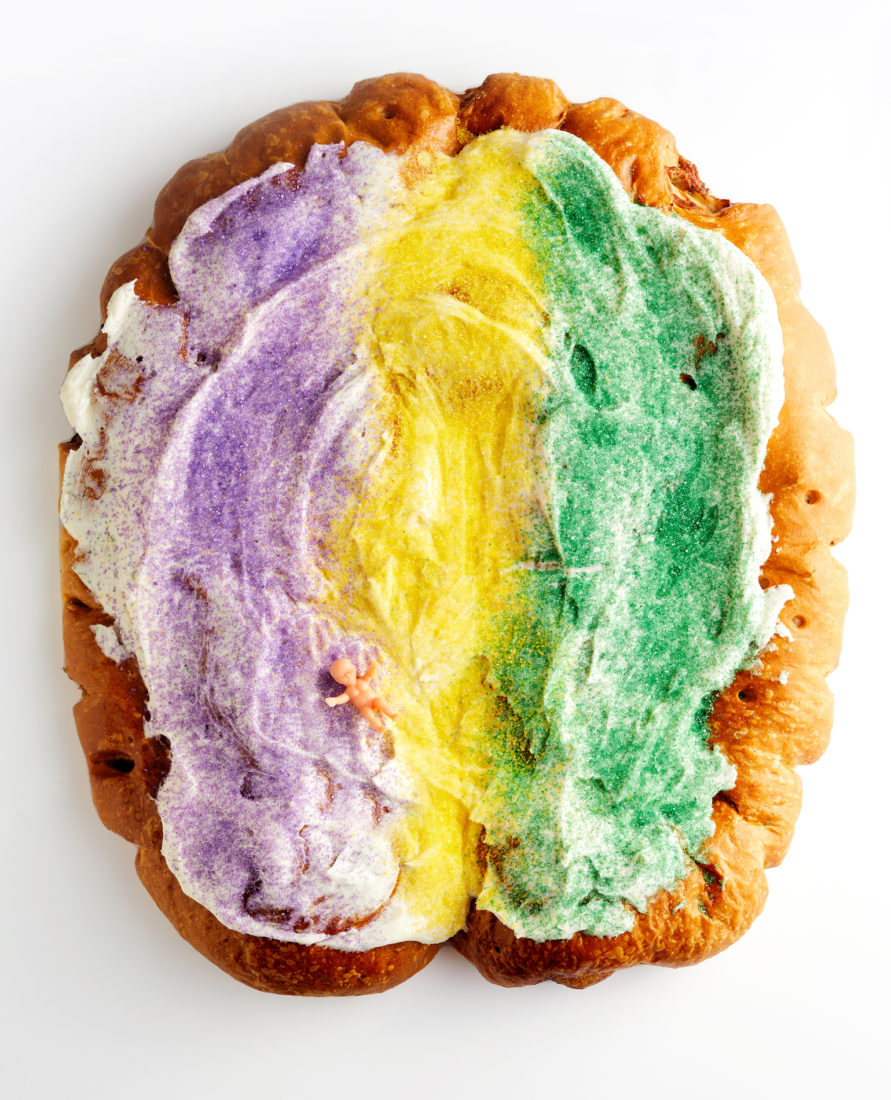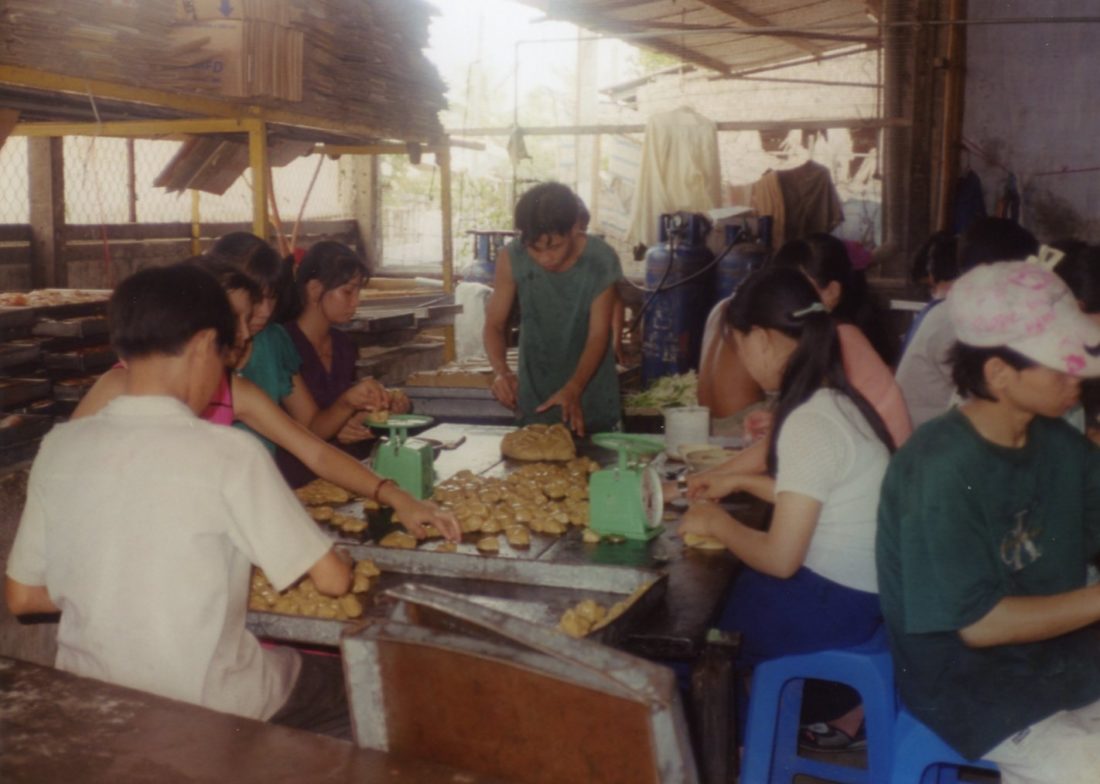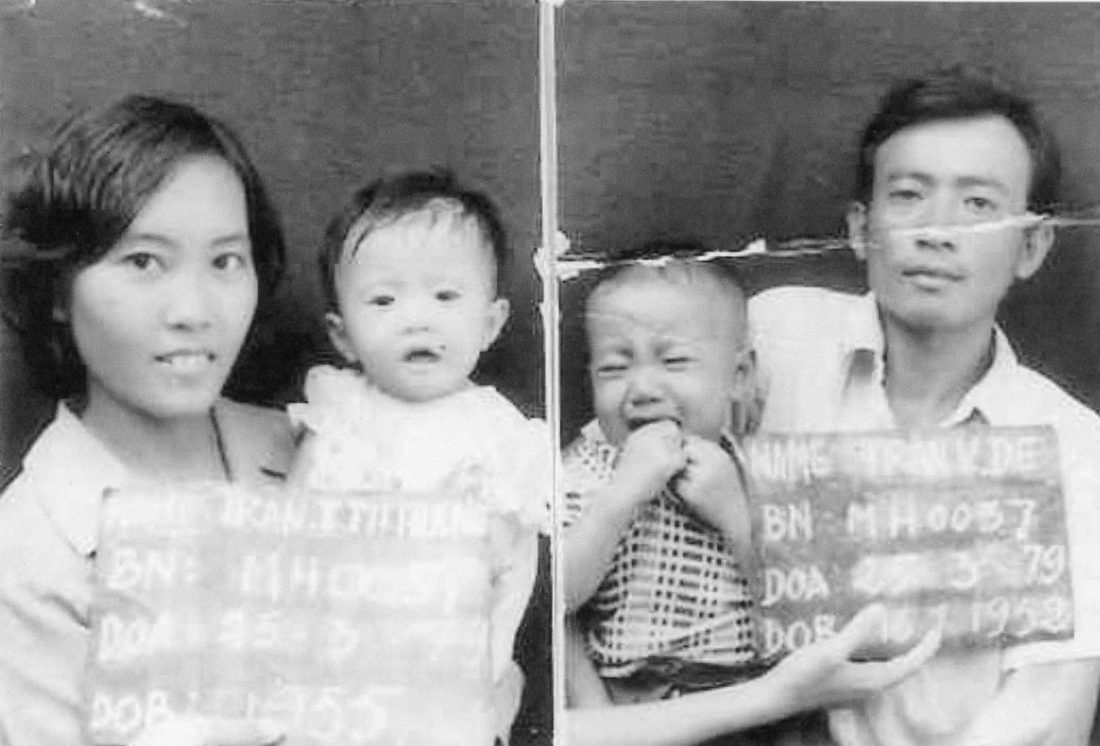New Orleans East stands proud on the bayou- and canal-laced isthmus of land between the south shore of Lake Ponchartrain and the northern bank of Lake Borgne, hard by the Bayou Sauvage National Wildlife Refuge. Unlike the western neighborhoods and districts of New Orleans, it’s not on the tourist track—NASA’s Michoud Assembly Facility, where large chunks of the agency’s long-haul moon rocket, the SLS, are being put together, lies on the network of canals just to the south, along with the very busy U.S. Coast Guard station. But New Orleans East, Michoud, and the Little Woods neighborhoods have long been a residential area for all waves of immigration to Louisiana—it’s no accident that the local Catholic church is the aptly named Mary Queen of Vietnam.
Arguably one of the few people in Louisiana busier than the NASA engineers or the Coast Guard right now is Linh Tran Garza, daughter of the founders and the current president of New Orleans East’s landmark Dong Phuong Bakery, a 2018 recipient of the James Beard Foundation’s America’s Classics award. “I just don’t think I can talk today,” says Garza in quiet apology on a January afternoon, “the season has begun.”
For Garza, the “season”—during which the bakery’s eighty employees work in three shifts, six days a week, twenty-four hours per day—is comprised of the ferociously party-hearty four to eight weeks between Epiphany, or Three Kings’ Day, and Lundi Gras, or the Monday before Fat Tuesday. In that time, the king cakes from the bakery, beloved across New Orleans and the Gulf region, are baked nonstop. Garza explains that her mother, the founder of the bakery, is the only Dong Phuong employee who works seven days a week. This year, the battle will be especially long, with the better part of eight weeks between Epiphany on January 6th and Mardi Gras, set for March 1st.
“Our maximum capacity is twelve hundred king cakes per day,” Garza says, in a moment when she has a bit more breathing room. “This year, we expect to be doing more than sixty thousand king cakes. The number may wind up being a little on the higher side, with the slightly longer season.”

To say that the Dong Phuong king cakes are popular across the Mardi Gras tier of the South is an understatement: The bakery has a landline, Garza explains, but it’s connected to an answering machine because the phone remains swamped with calls. There’s even a lively subreddit devoted to the state of the waiting line at the bakery to pick up the cakes.
The clamor of the confection’s intense popularity comes thanks to the Tran family’s culinary expertise and heritage. In their hands, the interplay of Asian and French traditions produces an appetizing fusion, which is, incidentally, why Dong Phuong’s baguettes and banh mi are so celebrated around New Orleans. More to the point during this runup to Mardi Gras, the French influence is why the Trans make their famous king cake with a brioche dough.
The buttery richness of the brioche base has been key to the cake’s meteoric rise. Put another way, although much is made of the king cake’s colorful mess of icing or the baby figurine adorning and/or sometimes baked inside, what actually matters to the masters of Mardi Gras in the capital of Mardi Gras—or to the sixty-thousand-plus of them that are Dong Phuong’s loyal customers—is the cake underneath.
A stop at Dong Phuong’s to pick up your cake is a very recent Mardi Gras must-do. Garza and her mother only began experimenting at home with recipes for their version in 2006 because “we wanted to give our Vietnamese community options for king cakes, to share in this long-standing New Orleans tradition.” She explains that she and her mother arrived at “the cake that you would recognize as ours” in 2008. “Classically, we fold the dough many times to give it the layers, and then we laminate those with butter. Lots of butter. So, it’s not actually the healthiest thing you could eat. But it’s only once a year that you have it.”
The baking tradition runs deep in the Tran family. Garza’s mother, Huong Thi Thuy Tran, whose homemade savory bean cakes and pastries led to the commercial beginnings of Dong Phuong in 1982, is herself the daughter of a baker, Quang Tran, who founded the family bakery and café south of Saigon in Sóc Trăng province in 1951, during the last years of French Indochina. Garza’s mother and father arrived in New Orleans as refugees after the Vietnam War, with her and her brother in tow, three years before they opened Dong Phuong, which, in homage to their journey from their lost homeland, translates as “the east.” Clearly the family is in possession of an absolutely indestructible culinary talent: Surviving the French war in Indochina, the American war in Vietnam, and the subsequent decades of Communism, Garza’s grandfather’s bakery still operates in Vietnam, now run by an uncle.

To celebrate having run the gauntlet of producing sixty-thousand-plus king cakes, Garza has instituted a sweet, very Louisiana valedictory ritual at Dong Phuong. “When we sell the last cake on Lundi Gras, we close up shop, set up the tents, and stage a big outdoor crawfish boil for our entire staff and their families,” she says. “Catered, so nobody has to work. By that point, we’ve all worked hard enough.”

Asked how she and her mother settled on their now-renowned brioche dough, Garza gives a deceptively simple answer, one in which the history of any food holds the history of the people who make it. It’s one of the larger ironies of the raging popularity of the Dong Phuong cake that it brings more than a little welcome French culinary baggage to this most French town. Aptly, in describing her work on the recipe with her mother, Garza speaks in the largest sense of the complex tapestry that is the history of Vietnam.
“We decided,” she says, “to go with what we know.”








